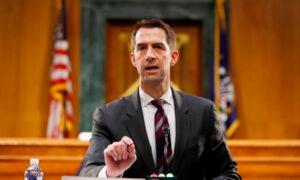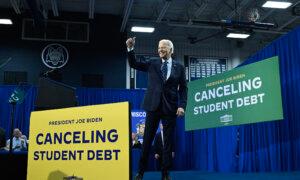The interest rate on new federal student loans for undergraduates during the upcoming 2024-25 school year is set to be the highest in 12 years following the U.S. Treasury Department’s 10-year note auction in May, according to new data from the Department of Education.
Elsewhere, the data released by the Department of Education on Tuesday shows that graduate students will experience an 8.08 percent interest rate this coming academic year, up from 7.05 percent under the current interest rate.
PLUS loans for graduate students and parents will also see a 9.08 percent interest rate, marking an increase from the current 8.05 percent.
The rates for graduate students and parents have not been that high since before July 2006, when they were 7.9 percent. That was also around the same time the government began setting fixed rates for student loans, meaning they would not fluctuate for the life span of the loan.
Before that, the majority of federal student loans had variable rates.
Biden Seeks Support From Young Voters
Interest rates on federal student loans for the upcoming school year are set annually by the government, and run from July 1 to June 30 of the following year. They are set based on the high yield on the auction of the 10-year Treasury note, which is held every year in May.This year, that Treasury yield has surged as the Federal Reserve has kept interest rates high as part of ongoing efforts to bring inflation back down to its 2 percent goal.
Last week’s 10-year Treasury note auction resulted in a high yield of 4.483 percent, according to the Education Department.
It comes as President Joe Biden has been touting his efforts to wipe out billions of dollars in student loans ahead of the November presidential elections as he seeks to secure support from young voters.
The current administration so far has discharged $153 billion in student loan debt for 4.3 million borrowers.
However, the Supreme Court struck down President Biden’s large-scale debt forgiveness plan—upon which he has campaigned extensively—in 2023, ruling it unconstitutional.
That ruling came amid widespread concern that the debt forgiveness program would lead to Americans who incurred no college debt effectively shouldering the bill for those who did.

Biden Revives Debt Forgiveness Program
Experts have also raised concerns regarding how the plan would impact the wider economy at a time when the cost of living has soared.According to the department, the newly revised plan would predominantly benefit borrowers who entered into student loan repayment plans over 20 years ago.
Elsewhere, borrowers with only undergraduate debt would qualify for forgiveness if they first entered repayment on or before July 1, 2005, while borrowers with any graduate school debt would qualify if they first entered repayment 25 or more years ago.
It would also benefit those who qualify for forgiveness programs such as Saving on a Valuable Education (SAVE), Public Service Loan Forgiveness (PSLF), and others.
If implemented, the new plan would also cancel runaway interest for millions of borrowers, according to the administration.
It is not yet clear if the new plan will face legal challenges.
According to that poll, President Trump is ahead among registered voters in a head-to-head matchup against President Biden in Michigan, Arizona, Nevada, Georgia, and Pennsylvania. However, President Biden led among registered voters in Wisconsin, the poll showed.







